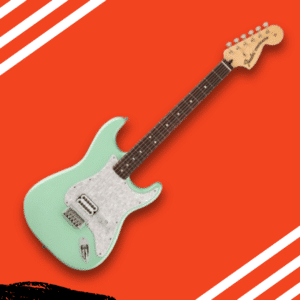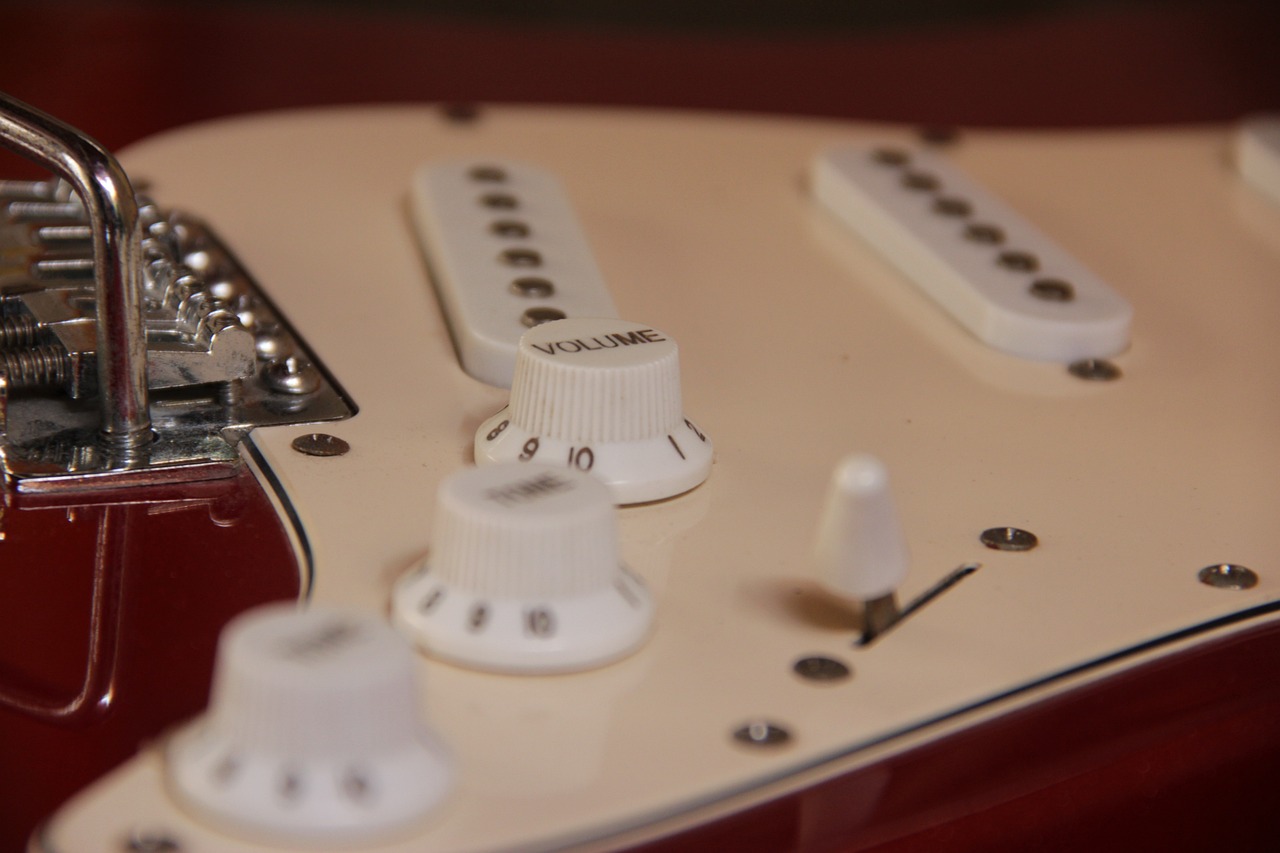
How to Play Guitar Like Tom DeLonge
Tom DeLonge may now be one of alternative rock’s most iconic guitarists, so it’s only right that you want to play like the formidable guitarist of Blink-182. Never far from an infectious riff, and always playing with ferocious energy, DeLonge has redefined the pop-punk landscape with his distinctive style. So, grab your guitar and let’s look into the intricacies of his playing technique and gander at his setup.
A background on Tom DeLonge
To truly understand Tom DeLonge’s impact and guitar playing, I think it is important to give some background on his career. Formed in the early 1990s in Poway, California, Blink-182 quickly rose to prominence with their humour, catchy melodies, and captivating live performances. With DeLonge on guitar, Mark Hoppus on bass, and Travis Barker on drums, the trio would quickly change the alternative music scene and build the pop-punk genre.
Blink-182’s breakthrough would come with the album, Enema of the State (1999). This catapulted them to superstardom, fueled by hit singles such as “What’s My Age Again?” and “All the Small Things.” The album’s infectious hooks, catchy riffs and rebellious topics struck a chord with audiences worldwide, and suddenly Blink-182 to the forefront of the music scene.
Tom DeLonge’s contributions to Blink-182 were instrumental in shaping the band’s sound and identity. His use of infectious riffs, energetic stage presence, and signature playing style became synonymous with the Blink-182. Without Tom Blink would not be where they are now.
Tom DeLonge's Playing Style
So you are here to know how to play like Tom DeLonge. Well, let’s take a look at his signature moves and guitar-playing style.
Power Chords
At the centre of Tom DeLonge’s guitar technique lies a perfect fusion of aggression and melody. This is characterised brilliantly by his relentless use of power chords. Delivered with precision and ferocity, the right-hand strumming pattern usually involves a lot of downstrokes, which is prevalent within pop-punk.
The right-handed prowess works excellently into DeLonge’s mastery of palm muting. Palm-muting features a lot within Blink-182’s music, adding a percussive edge to his rhythm guitar work, creating a dynamic foundation for Blink-182’s high-octane sound.
Hear this technique: “All The Small Things”, “First Date”, and “Dammit”.
Octaves
In addition to power chords, DeLonge incorporates octaves into his playing to add additional depth and richness to his chord progressions. DeLonge uses these octave chords to increase the intensity and energy of certain songs while also emphasising the tonality of Blink 182’s songs, doubling the tonic (root) note. This technique ensures that the song retains very little dissonance, making every pattern sound clean.
DeLonge sometimes uses these within his playing to emphasise a melodic line as these chords are easy to move seamlessly across the fretboard.
Hear this technique: “Edging”, “Feeling This”, and “Anthem Part Two”.
Catchy Lead Lines
Tom’s rhythm may take centre stage, but he is also a master of crafting simplistic yet memorable riffs. These iconic riffs are unrivalled in their catchiness, this allows them to serve as the backbone of Blink-182’s music. Often these lines will rely on open strings to create a rich texture.
His ability to craft singable guitar parts and accessible melodies is a testament to his songwriting genius. Whether it’s the infectious hook of “Dammit” or the anthemic riff of “Rock Show”, DeLonge’s knack for simplicity is what sets his playing apart.
Hear this technique: “What’s My Age Again?”, “Rock Show”, and “First Date”.
Get Tom's Setup
We might have the playing down now, but we have yet to capture the guitar tone. Let’s look at Tom DeLonge’s setup to complete the sound.
Tom's Guitars
Gibson ES-333

The Gibson ES-333 is Tom DeLonge’s guitar of choice. Renowned for its semi-hollow body construction this guitar has a rich, resonant tone which is crucial to the Blink 182 guitarist’s style. Typical of DeLonge’s guitars this instrument only has a bridge pickup and a singular volume control which is often cracked up to full at every moment.
A rosewood fretboard is combined with a signature striped design making this guitar uniquely Tom’s. While there hasn’t been stock of this instrument for a while this guitar is designed similarly to an ES-335, so you could use one of them and ensure you only dial in the bridge humbucker. DeL
Fender Stratocaster

When Tom moves away from his Gibson, He usually relies on the Stratocaster. The Strat offers a brighter, more articulate sound that adds versatility to DeLonge’s sonic palette.
His use of a Fender Stratocaster has even led Fender to produce a signature model for the guitarist. This model again has a single humbucker and volume control typical of Tom’s specs.
Tom's Amplifiers
When it comes to Tom’s use of amplifiers there are two clear eras. The first is his use of a Marshall and Mesa Boogie, then the second era sees him move towards Vox and Fender amplifiers.
JCM 900 and Mesa Boogie Triple Rectifier

A mainstay in DeLonge’s rig, the Triple Rectifier delivers bone-crushing distortion and unparalleled power, ideal for driving Blink-182’s high-energy performances. This amp drives a lot of the distorted tones and allows Tom to go ham during his performances. However, this amp was always paired with a Marshall JCM 900 to give the guitarist a bit more versatility.
This setup was the one used for the majority of Blink 182’s early albums, seeing use all the way until Tom momentarily left the band to focus on Angels and Airwaves.
Fender Twin Reverb and VOX AC30

After returning from Angels and Airwaves, Tom moved to using combo amplifiers mostly in the form of the Vox AC30. Tom talks about his use of this amplifier in this interview with Vox. This amplifier has quickly become his main go-to for most of his music, especially since starting Angels and Airwaves.
Much like his use of guitars, Tom will use a Fender Twin 65 to add a bit of versatility to his guitar rig.
Tom's Guitar Pedals

MXR EVH-117 Analog Flanger: This pedal adds a touch of swirling modulation to DeLonge’s tone, creating rich, atmospheric textures that enhance his guitar sound.
MXR Phase 90: A staple of DeLonge’s pedalboard, the Phase 90 injects a touch of vintage flair with its swirling phaser effects, adding movement and dynamics to his playing.
BOSS DD-6 Digital Delay: Renowned for its pristine digital delay, the DD-6 allows DeLonge to create lush, spacious echoes that add depth and dimension to his guitar sound.
Electro-Harmonix Big Muff Pi: This iconic fuzz pedal delivers thick, saturated distortion that adds warmth and grit to DeLonge’s tone, perfect for unleashing blistering solos and crunchy rhythm parts.
Fulltone Full-Drive2 Mosfet: Known for its versatile overdrive tones, the Full-Drive2 Mosfet provides DeLonge with a wide range of saturated crunch and smooth lead tones, making it an essential component of his pedalboard.
Tom DELonge's guitar legacy
Tom DeLonge’s contributions to the pop-punk genre are nothing short of revolutionary. His infectious riffs, unique guitar playing, and electrifying stage presence have inspired numerous aspiring musicians to pick up the guitar and embrace pop-punk.
Whether he’s unleashing blistering power chords, crafting catchy melodies, or ripping some luscious octave chords, DeLonge’s influence reverberates throughout the music world, solidifying his legacy as a true guitaring icon. Throw into this his ability to write songs, and drop some of the most iconic vocal lines in alternative history. Tom is nothing short of a legend!
See more about another iconic guitarist.
You May Also Like

The Origins Of The Smashing Pumpkins
November 26, 2023
11 Things to know before you learn guitar!
May 28, 2023


